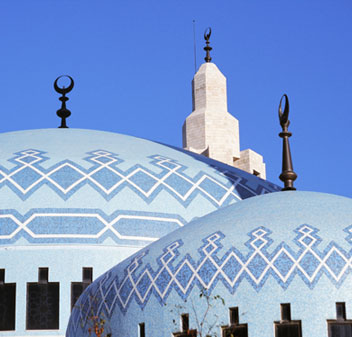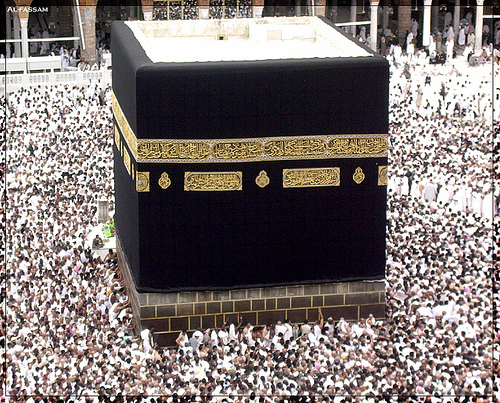Introduction to Islam (Part 4 of 5: Religion)
 This blog entry continues the series I began a few days ago to provide a brief overview of Islam.
This blog entry continues the series I began a few days ago to provide a brief overview of Islam.
In Part 1, I began by looking at Muhammad and the origins of Islam. Next, in Part 2, I looked at the message of Muhammad that is recorded in the Qur’an. Yesterday, in Part 3, I looked at what constitutes Islam’s core beliefs. Today I would like to look at the highly developed code of Islamic observance.
I have done my best to ensure factual accuracy in all these posts and have used Islamic sources as much as possible to ensure that I’m not propagating Christian misconceptions of Islam. I did send this to some Muslim friends for comment, but I have yet to hear back. If you are a follower of Islam and believe that I have misrepresented your religion, please drop me an email and I will remedy the situation.
There are many obligations associated with Muslim. For example, Muslims are not allowed to consume alcohol, pork, blood or carrion. The most important aspects of “religion” in Sunni Islam are the “Five Pillars”:
1. Confessing the faith (shahada): This is the basic Muslim creed, similar to the Jewish Shema, but with the additional affirmation that Muhammad is a prophet:
“I testify that there is none worthy of worship except God and I testify that Muhammad is the Messenger of God.” – The Shahada
2. Prayer (Salah): One cannot help but be impressed by the Muslim dedication to formal prayer and I believe this is something from which Christians can definitely learn. The observant Muslim’s prayer regimen is similar to that found a Christian monastery.
Every aspect of prayer is defined: at what hour, how often (five times a day), in what language (only Arabic), what to wear, what to wash beforehand, how to wash, which direction to face, postures and gestures.
3. Fasting (Sawm): This primarily takes place during the ninth month known as Ramadan (the Islamic calendar is a lunar calendar so its date is not fixed). The fasting is extreme, but brief. A Muslim will fast from food, drink, perfumes, tobacco and sex between sunrise and sunset. After sunset, however, the restrictions are no longer in place. There are intricate rules regarding things which may invalidate the fast, such as swallowing a drop of water when brushing one’s teeth.
4. Giving Alms (Zakat): This is the giving of the prescribed portion of accumulated wealth to the Muslim poor and to causes for the spread of Islam.
5. Pilgrimage (Hajj) to Mecca: Every Muslim who is able is required to make the pilgrimage once in his lifetime to Mecca. Once this has been accomplished, the Muslim gains special respect among the community. As with everything else in Islam, there are very detailed rules laid down for the performance of the pilgrimage. At the heart of the rite is the ceremony of walking seven times around the Kaba shrine (see picture below).
(6. Jihad: This is only regarded as a “pillar” by some Sunni Muslims)
Parallel practices to all these pillars may be found in Christianity. Catholics especially, should be familiar with creeds, formal prayer, fasting, alms-giving and pilgrimage.
Sufism
Before I end today’s post, I would like to mention Sufism. Sufis are male and female Islamic mystics who live simple lives, which allow them to focus on their personal relationship with Allah. Their lives are characterised by purity, poverty, reciting the Muslim rosary and spending much time in meditation. Sufism has often been controversial within Islam, in no small part due to its similarity with monastic Christianity.
Next Time…
Tomorrow will be the final installment of this series and I will be looking the Catholic response to Islam as outlined in Vatican 2.

Pingback: Introduction to Islam (Part 1 of 5: Muhammad) | This Restless Pilgrim
Pingback: Introduction to Islam (Part 2 of 5: Revelation) | This Restless Pilgrim
Thank you for this informative introduction to Islam. Given the ever changing world we live in, and to improve dialog among peoples, we have to be educated. Keep up the good work! :o)